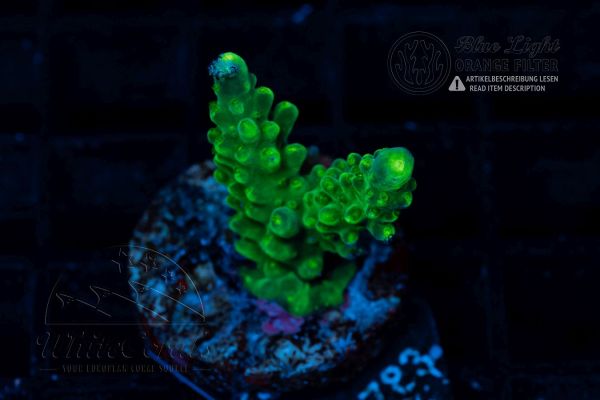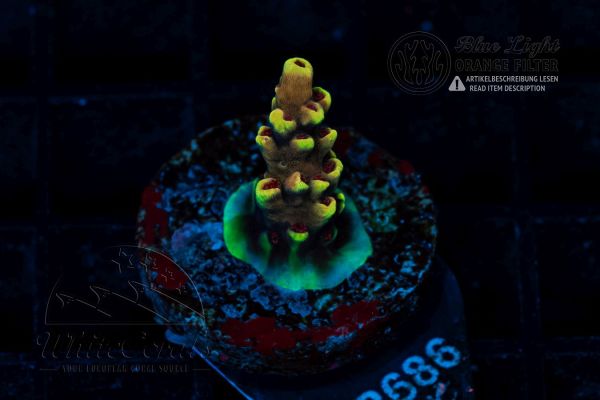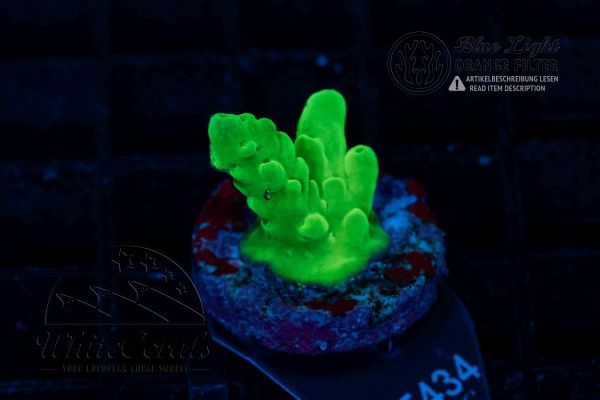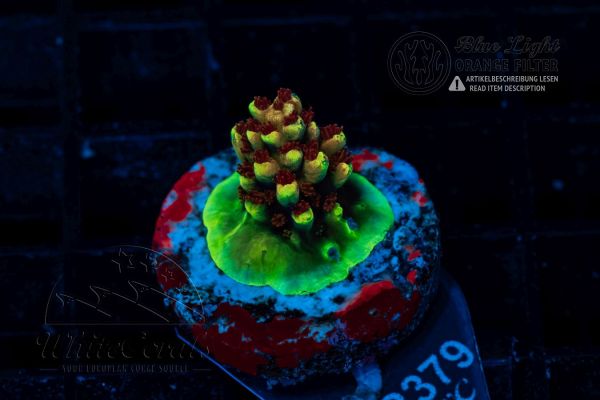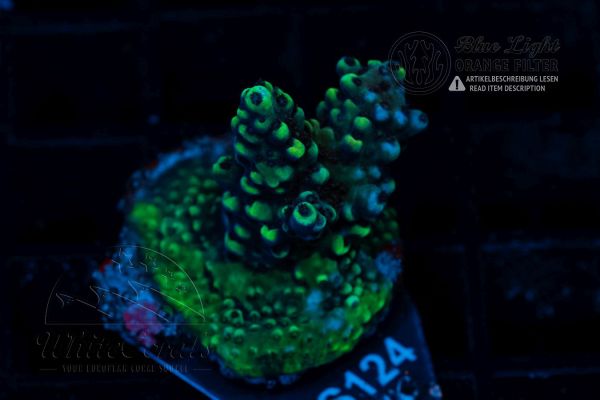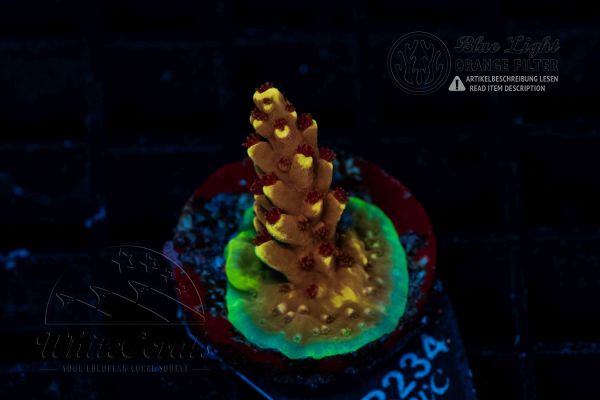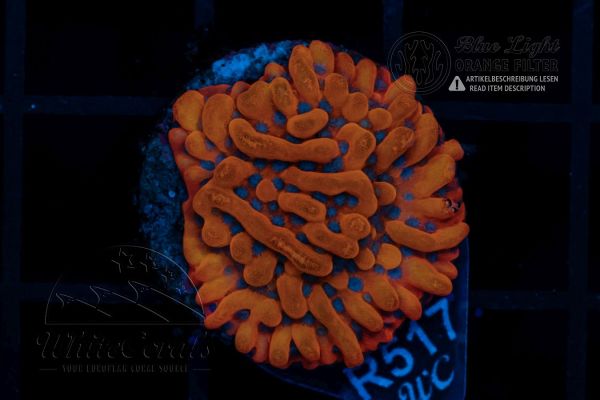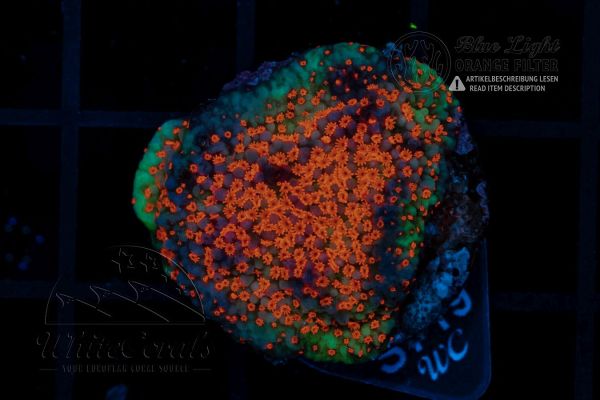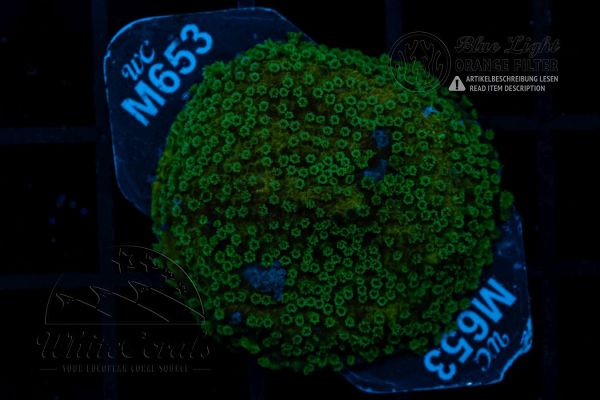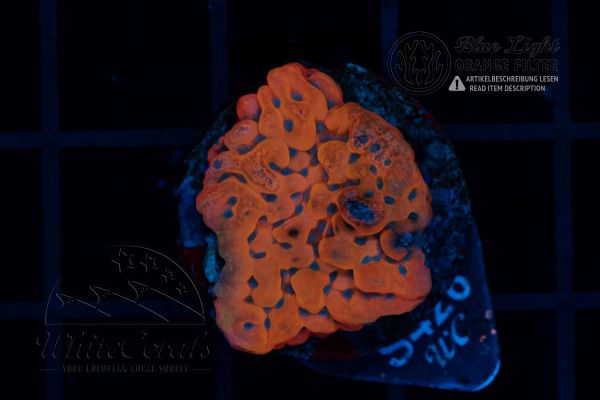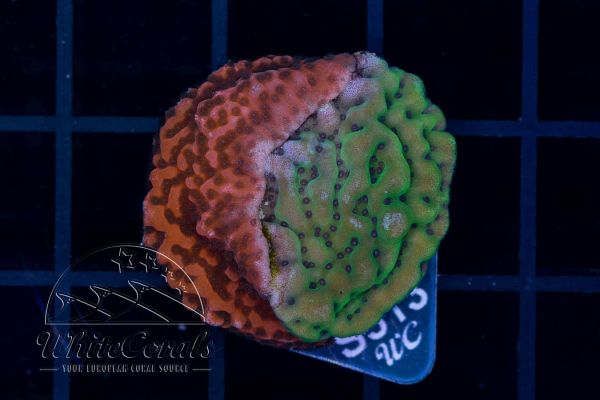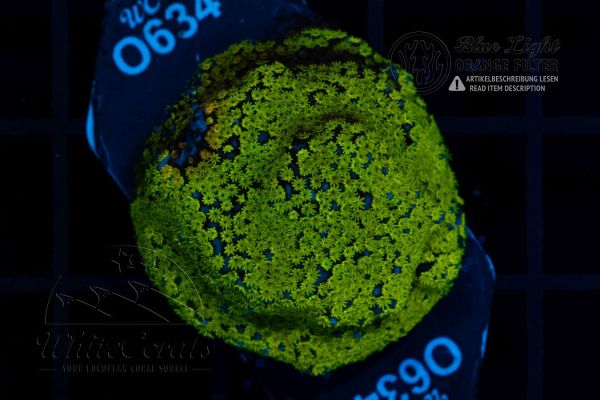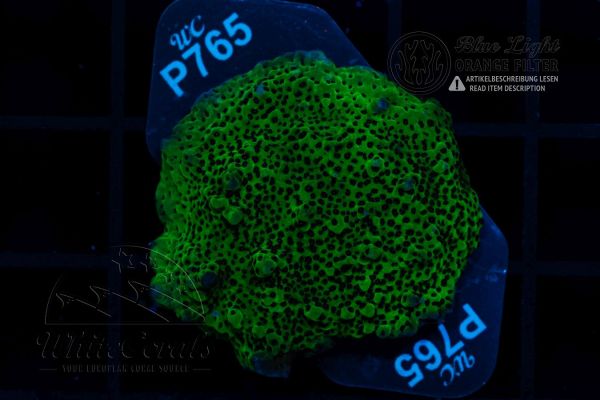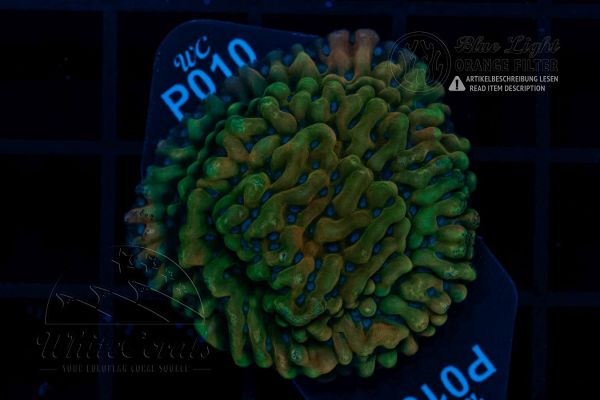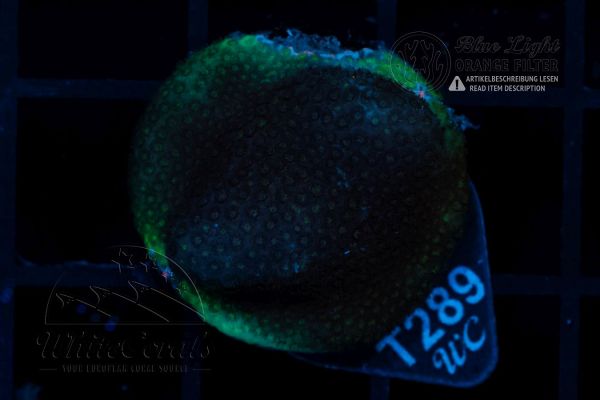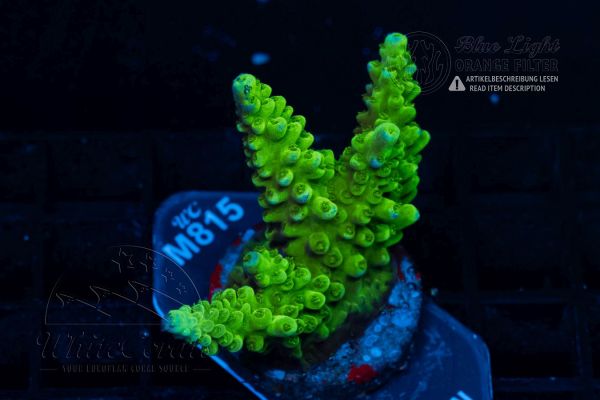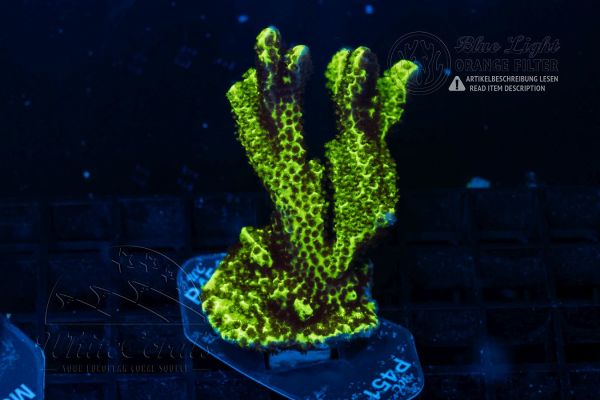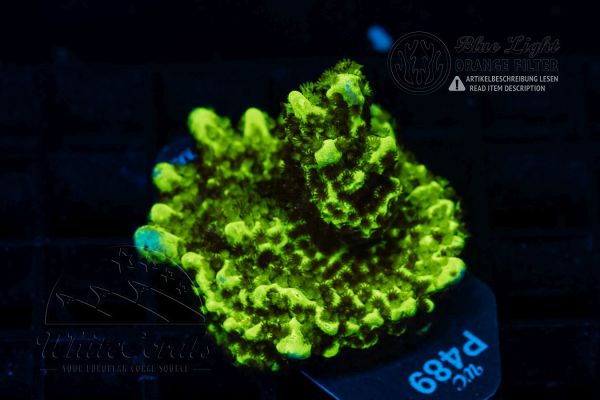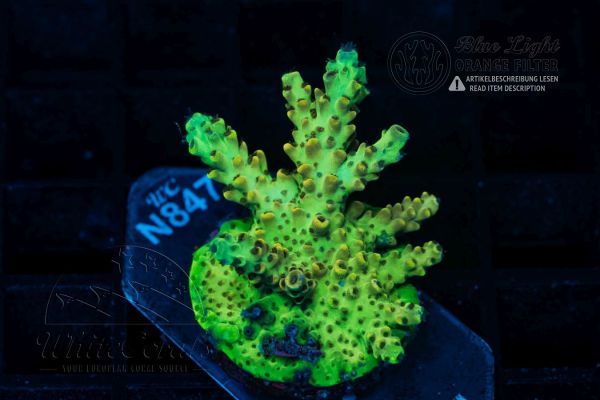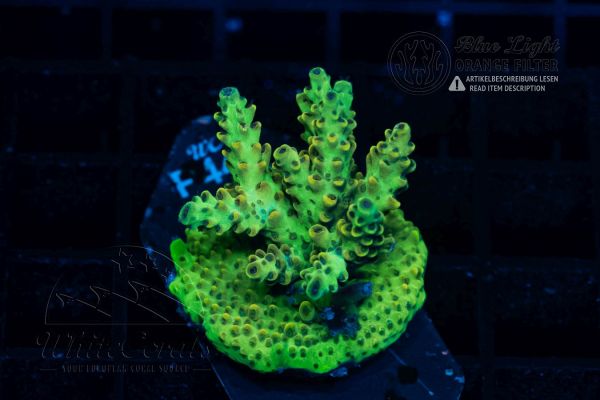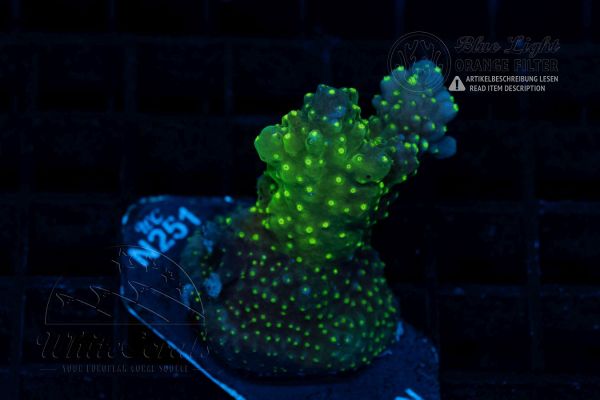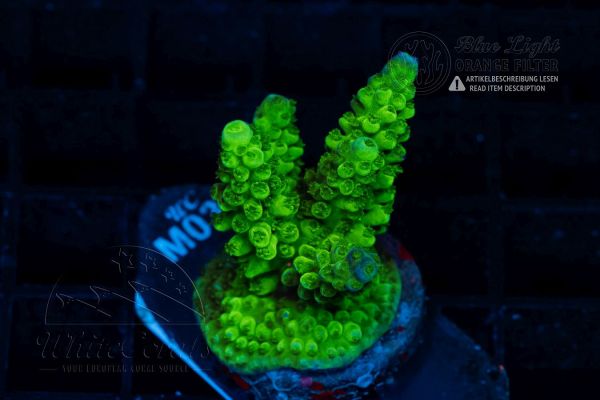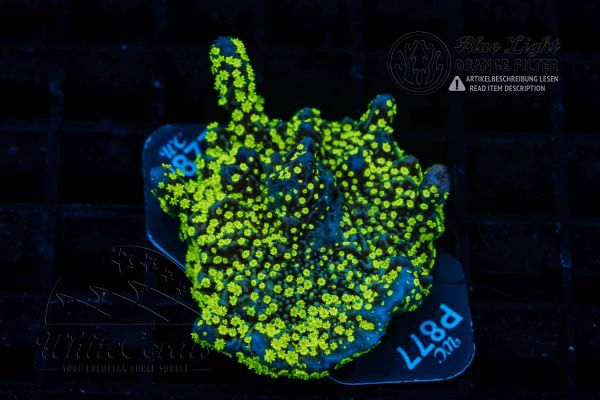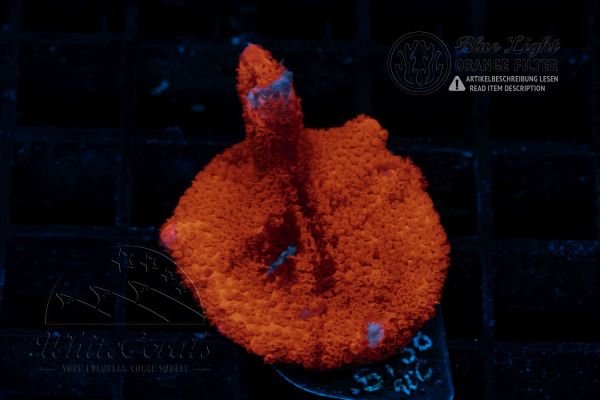Corals
Written as Small Polyp Stony / Small Polyp Scleractinia corals (German: small polyped hard corals) this title gives a rough division of reef-building and colony-building hard corals in small polyped hard coral and large polyped hard coral (LPS), also designated as „real corals“.
In this category of our online shop you will find an extensive collection of beautiful and rare SPS hard corals. Mostly it is concerned with SPS frags which were bred in the sea. Partially we also have very rare deepwater SPS.
SPS – hard corals belongs to the sub-class of Hexacorallia. Usually corals from this sub-class have (small) polyps with tentacles which in groups grows to six polyps and deposits an exoskeleton from the lime on the polyp foot. Most of the hard corals live in the endosymbiosis with single-celled algae (Zooxanthellae).
Acropora secale Joker (WCC)(Filter)
EUR 24,90*
to articleAcropora Dragonsbreath (WCC)(Filter)
EUR 49,90*
to articleAcropora willisae Green (Filter)
EUR 24,90*
to articleAcropora Dragonsbreath (WCC)(Filter)
EUR 49,90*
to articleAcropora Dragonsbreath (WCC)(Filter)
EUR 59,90*
to articleMontipora Flaming Phoenix (Filter)
EUR 59,90*
to articleMontipora Grinch (WCC)(Filter)
EUR 29,90*
to articleMontipora Reverse Pokerstar (Filter)
EUR 19,90*
to articleMontipora palawanensis Brain Freeze (Filter)
EUR 59,90*
to articleMontipora Grafted Red and Green
EUR 19,90*
to articleMontipora Rainbow (WCC)(Filter)
EUR 29,90*
to articleAcropora Green Staghorn (Filter)
EUR 24,90*
to articleMontipora confusa Yellow (Filter)
EUR 19,90*
to articleMontipora confusa Yellow (Filter)
EUR 19,90*
to articleAcropora insignis Rose Garden (Filter)
EUR 34,90*
to articleAcropora insignis Rose Garden (Filter)
EUR 34,90*
to articleAcropora insignis Aussie (Filter)
EUR 24,90*
to articleMontipora digitata Grafted Zebra (WCC)(Filter)
EUR 149,90*
to articleMaintenance of SPS corals
Strong light & strong flow - the SPS Eldorado
Usually the stronger the lighting for SPS, stronger the water flow and cleaner the water (low phosphate- and nitrate values) the more one thanks the SPS coral with powerful growth and incredible beauty. With nutrients one should pay attention to a balanced but also nutrient-and sediment-poor mixture. The water temperature should be between 22 and 25 °C. You can either collect the values for water and light at Whitecorals online shop from SPS maintenance recommendations or you contact us directly. With the huge collection of SPS corals having different requirements, the spectrum of maintenance conditions is very high.
Hard corals or soft corals?
Many times one might meet aquarists who are either confined just to hard corals (either only SPS or LPS or SPS with LPS together) or vice versa, only soft corals. However it is very much possible to maintain both soft and hard corals together in a mixed tank. The most important rule thus is to create sufficient space for both hard- and soft corals. Further one should note that soft corals do not grow unhindered over hard coral colonies. So a friendly coexistence of soft- and hard corals is possible. Skimmer and activated carbon help in the degradation of substances which are eliminated by SPS.
Multiplication of SPS corals
Most of the SPS corals multiply easily due to fragmentation asexually. Separated fragments can be attached with cable strap or coral glue to a small piece of live rock and the new frags are set at a suitable location in the reef aquarium.
Acropora SPS corals
One of the most cost-effective class is Acropora (staghorn coral) from the family of Acroporidae liked especially by amateur aquarists. Usually these fosterlings from the Pacific adapt quickly to their new environments, multiply both sexually- and asexually and often have extraordinary colours in all colours of the rainbow. At Whitecorals.com you will find such gems as Acropora millepora Bali Blue Tips (short, closely branched, pink-coloured branch with violet-blue tips), Acropora echinata Yellow (yellow, small tubes pointed upwards) or Acropora gomezi Bali (Nub-like, straight branch in bright blue). One of the most sought-after corals is the so called Acropora strawberry shortcake coral which is always available on our online shop.
Montipora - beginners coral
For beginners who do not want to miss the SPS in their aquarium, are recommended to begin with the robust class Montipora. This class from the Indo-Pacific exists in almost every habit and is more resistant and easy to maintain in comparison to Acropora. At Whitecorals you will find beautiful Montipora species and Montipora frags (frags). Wild Montipora normally has brown colour. More colours like green, purple, beige and pink with red or blue polyps are found in the offsprings. For example Montipora digitata (finger-shaped, robust corals) or Montipora delicatula (saucer-shaped, flat micropores coral)
Pocillopora
Further known and popular species are: Pocillopora (Raspberry coral/Bush coral), eine wart-shaped coral species which is usually brown in colour, however there are also species in blue, pink, green and „Creme“ colour (yellowish white); \n
Seriatopora & Stylophora
Seriatopora (Dorn coral/Needle-coral) with very thin branches and needle-like tips which are arranged bush-shaped. The colours thus reach from brown and pink to yellowish white. The common coral of this species is Seriatopora hysterix. Stylophora (style coral) with thick, sometimes flat branches and round, blunt ends and green, blue, pink and creme – colours (e.g. Stylophora Tonga Pink Frag)
Good to know about SPS corals
SPS have high requirements regarding water parameters and develop their full beauty at low nutritional values (low values damage the corals). They would like lots of water flow and lots of light. SPS corals use products of zooxanthellae as feed. They also eat the dissolved organic substances as well as amino acids which can be given directly into the water.
Few tips for successful maintenance of SPS corals
Acropora should not be used as starter – corals in new aquarium since they cannot adapt to the fluctuations in water parameters very well. Montipora becomes dark or brown if lots of nutrients are added to the water; the reason is the strengthened formation of zooxanthellae. Pocillopora are vulnerable to dwarf angel fish and like most of the SPS, are very fragile. Seriatopora often accommodates a Gallkrabbe which lives symbiotically with the corals. Stylophora are easy to maintain than the Acropora and Montipora species. Damsel fishes often live symbiotically with Stylophora.
Buy SPS hard corals online at Whitecorals
We have a colourful collection of build beautiful SPS hard corals at our Whitecorals online shop. Whether private person or dealer, we serve both. The shipment of corals take place within 24 hours; so a fast delivery and a stress-free coral is guaranteed to the customers. Please contact us, we would be glad to help you with further questions regarding corals, marine aquarium and techmology or visit us in-person near Stuttgart area.
